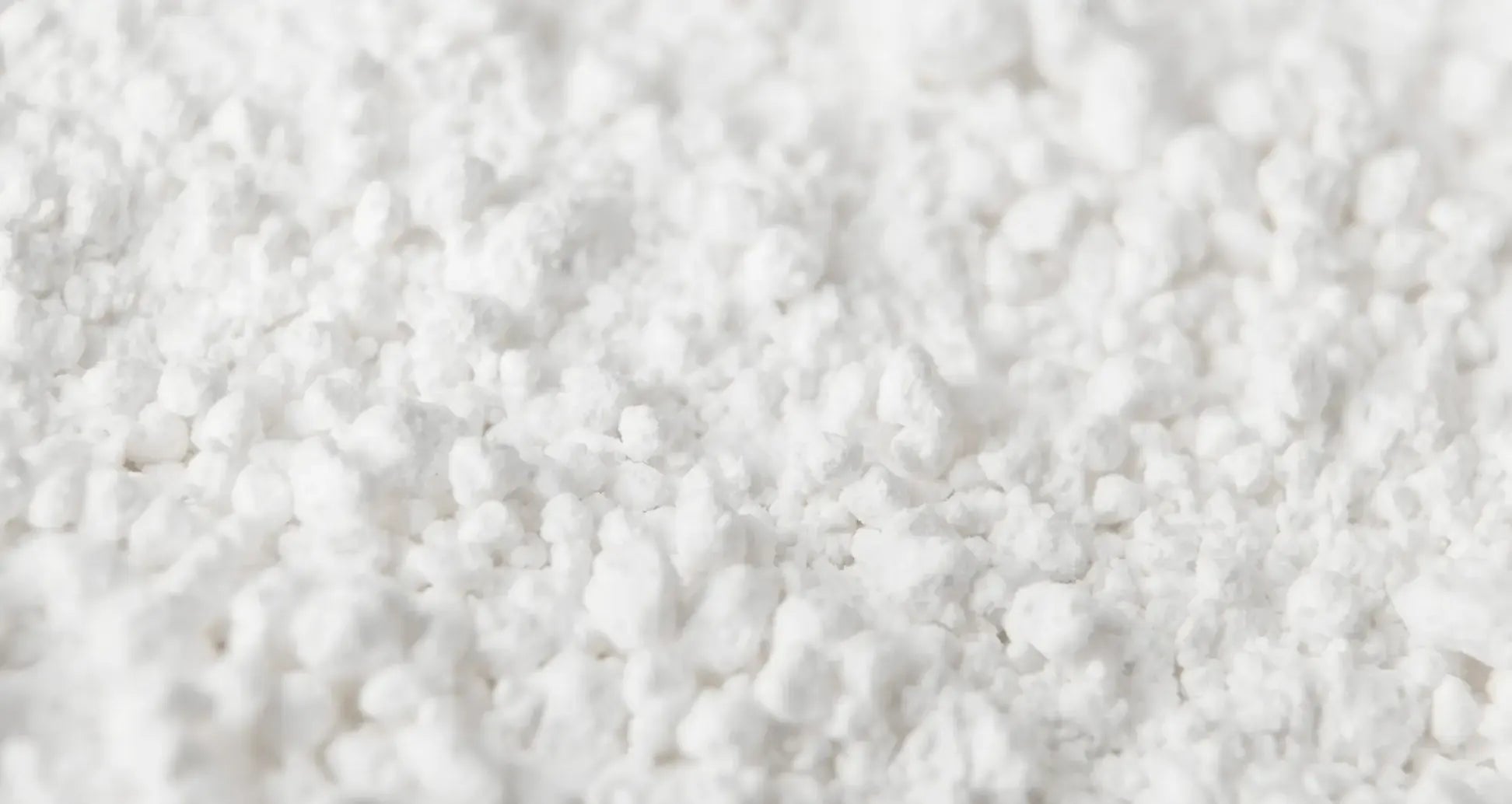
azelaic acid
Azelaic acid belongs to the chemical group of dicarboxylic acids and is extracted from barley, rye, or wheat. Azelaic acid, in the mild form we use, combined with the skin-caring amino acid glycine (PAD = Potassium Azeloyl Diglycinate), impresses with its exceptional tolerability – even for sensitive skin types.
What is azelaic acid good for?
With its anti-inflammatory and antibacterial properties, azelaic acid combats blemishes, pimples, and pustules. It reduces redness and irritation of the skin. Azelaic acid helps significantly fade acne scars and pigmentation spots (UV-induced sun damage, age spots, melasma), thus contributing to a smoother, more even, and radiant complexion.
The strength of azelaic acid lies in its versatility and gentle action. It is ideal for all skin types and particularly helpful for skin concerns such as blackheads, redness, or rosacea. Its soothing properties make it a popular choice for sensitive skin, as it relieves irritation and gently clarifies the skin. For blackheads, it keeps pores unclogged and ensures a visibly clearer complexion in the long term. Its multifunctional composition combines effectiveness with high tolerability.
But it's not just oily or blemished skin that benefits from azelaic acid. Those with dry skin can also benefit from its use. Combined with a facial lotion, it provides intensive moisture and soothes the skin. Its gentle yet effective action makes it a true all-rounder in skin care.
How do I use azelaic acid?
Azelaic acid can be easily integrated into your daily skincare routine:
1. Start with a small amount to test your tolerance.
2. Apply the azelaic acid serum to cleansed skin, preferably in the evening, as the skin regenerates during the night. Avoid direct contact with the eyes and mucous membranes.
3. Combine the azelaic acid serum with a moisturizing face cream to soothe and hydrate the skin.
How often should I use azelaic acid?
The frequency of application depends on your skin type and the product concentration. For low-concentration products, azelaic acid can be used once or twice a day. For beginners, it's recommended to increase application slowly, for example, starting with two to three times a week. Observe how your skin reacts and increase the frequency if no irritation occurs. Also, be sure to use sunscreen during the day, as azelaic acid can make skin more sensitive to UV rays.
Does azelaic acid increase photosensitivity?
Azelaic acid does not significantly increase photosensitivity, as is the case with fruit acids or retinol, for example. It may even have mild antioxidant properties and help reduce skin redness. However, using an SPF 30+ sunscreen during the day is recommended, as any form of skincare that reduces inflammation or stimulates skin renewal can indirectly make skin slightly more sensitive.
Is a facial serum with 10% azelaic acid suitable during pregnancy and breastfeeding?
Yes, azealaic acid up to 10% is considered safe for use during pregnancy and breastfeeding. It is non-teratogenic (no proven harm to the unborn child) and is often recommended as an alternative to retinoids for pregnancy acne, rosacea, or hyperpigmentation. Azealaic acid has no hormonal effects—unlike, for example, salicylic acid in high, prescription doses.
Especially during pregnancy and breastfeeding, make sure that the Azelain Serum - like your other facial care products - is free of fragrances, alcohol, and irritating preservatives.
Which active ingredient combinations containing azelaic acid can potentially be problematic for sensitive skin?
For example, if you use heavily exfoliating products, you should make sure your skin has enough time to regenerate. Avoid using azelaic acid on freshly cleansed, already irritated skin. Instead, combine it with soothing ingredients like panthenol, beta-glucan, licorice, or green tea extract. This way, you can ensure your skin isn't overwhelmed and the active ingredients can develop their full effect.
Strong acids in high concentrations (BHA, AHA) - These include salicylic acid above 2%, glycolic acid above 5%, or lactic acid above 8%. Combining them with azelaic acid can cause irritation on very sensitive skin, as azelaic acid already has an exfoliating effect.
Retinoids (retinol, tretinoin, adapalene, retinal) - Retinoids can irritate the skin and cause dryness or flaking. If a combination is desired, it should be introduced slowly (e.g., retinoid in the evening, azelaic acid in the morning).
Benzoyl peroxide - Benzoyl peroxide can cause severe skin dryness and irritation when combined with azelaic acid. If you want to use both, alternate them on different days.
Vitamin C (ascorbic acid) - Azelaic acid and vitamin C both have antioxidant properties, but pure vitamin C is sensitive to pH levels. Combining high doses of ascorbic acid with azelain can weaken the effects of vitamin C or cause irritation. Therefore, our application recommendation: Vitamin C in the morning, azelaic acid in the evening.
Niacinamide (problematic in very rare cases) - generally well-tolerated, but some people report increased skin reactions when using azelaic acid and niacinamide simultaneously. Therefore, our recommendation: Introduce the combination of azelain and niacinamide slowly into your routine, or use both active ingredients in separate steps in the morning and evening.
If you have very sensitive skin, it is advisable to always test new combinations on small areas of skin first and gradually to minimize possible irritation.
Can azelaic acid be used permanently?
Yes, azelaic acid is suitable for long-term use. Its gentle formulation allows for daily use without stressing the skin. It can help improve the appearance of the skin over the long term, especially for persistent skin problems such as acne or dark spots.
How long does it take for azelaic acid to work?
Initial improvements can be seen after about 4 to 8 weeks. However, more noticeable results may take up to three months. Regular and consistent use is crucial to reaping all the benefits of azelaic acid. Conclusion: Azelaic acid as a versatile skincare aid
Conclusion: Azelaic acid as a versatile skin care aid
Azelaic acid is a versatile ingredient suitable for treating a wide range of skin concerns. Whether it's acne, dark spots, or redness, azelaic acid offers a gentle yet effective solution. Combine it with complementary products such as a facial serum or a nourishing lotion for best results. Remember to adapt your application to your skin's needs and maintain a consistent skincare routine.
With patience and the right care, you'll achieve visibly improved skin in the long run. A balanced lifestyle combined with the right skincare routine will provide optimal support for your skin.
Azelaic acid can be found in our Fruit Acid AHA Peeling





